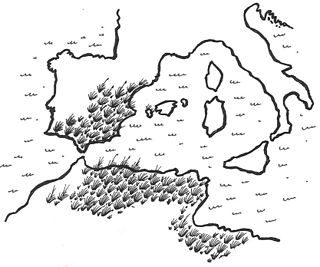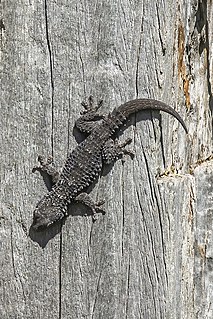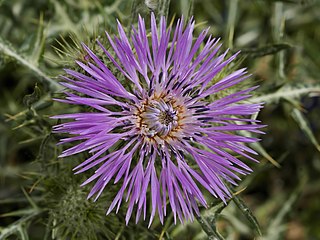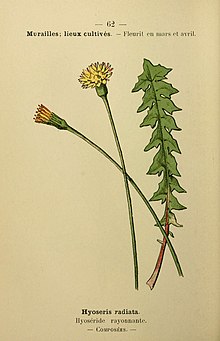
Marrubium is a genus of flowering plants in the family Lamiaceae, native to temperate regions of Europe, North Africa, and Asia as far east as the Xinjiang region of western China. A few species are also naturalized in North and South America.

The genus Ophrys is a large group of orchids from the alliance Orchis in the subtribe Orchidinae. They are widespread across much of Europe, North Africa, Caucasus, the Canary Islands, and the Middle East as far east as Turkmenistan.

Asphodelus is a genus of mainly perennial flowering plants in the asphodel family Asphodelaceae that was first described by Carl Linnaeus in 1753. The genus was formerly included in the lily family (Liliaceae). The genus is native to temperate Europe, the Mediterranean, Africa, the Middle East, and the Indian Subcontinent, and some species have been introduced to, and are now naturalized in, other places such as New Zealand, Australia, Mexico and southwestern United States. Many asphodels are popular garden plants, which grow in well-drained soils with abundant natural light.

Thekla's lark, also known as the Thekla lark, is a species of lark that breeds on the Iberian Peninsula, in northern Africa, and sub-Saharan Africa from Senegal to Somalia. It is a sedentary (non-migratory) species. This is a common bird of dry open country, often at some altitude. Thekla's lark was named by Alfred Edmund Brehm in 1857 for his recently deceased sister Thekla Brehm (1833–1857). The name is a modern Greek one, Θέκλα (Thekla), which comes from ancient Greek Θεόκλεια (Theokleia) derived from θεός and κλέος. The population is declining in Spain, but this is a common bird with a very wide range and the International Union for Conservation of Nature has rated its conservation status as being of "least concern".

Esparto, halfah grass, or esparto grass is a fiber produced from two species of perennial grasses of north Africa and southern Europe. It is used for crafts, such as cords, basketry, and espadrilles. Stipa tenacissima and Lygeum spartum are the species used to produce esparto.

Tarentola mauritanica, known as the common wall gecko, is a species of gecko (Gekkota) native to the western Mediterranean area of North Africa and Europe. It has been introduced to Madeira and Balearic Islands, and the Americas. A nocturnal animal with a predominantly insectivorous diet, it is commonly observed on walls in urban environments in warm coastal areas; it can be found further inland, especially in Spain where it has a tradition of cohabitation with humans as an insect hunter. A robust species, up to 15 centimetres (5.9 in) long, its tubercules are enlarged and give the species a spiny armoured appearance.

Pinus halepensis, commonly known as the Aleppo pine, also known as the Jerusalem pine, is a pine native to the Mediterranean region.

Onopordum, cottonthistle, is a genus of plants in the thistle tribe within the Asteraceae. They are native to southern Europe, northern Africa, the Canary Islands, the Caucasus, and southwest and central Asia. They grow on disturbed land, roadsides, arable land and pastures.

Oruç Reis was an Ottoman corsair who became Sultan of Algiers. The elder brother of the famous Ottoman admiral Hayreddin Barbarossa, he was born on the Ottoman island of Midilli and died in battle against the Spanish at Tlemcen.

Zodarion is a genus of ant-eating spiders from the family Zodariidae. Over 170 species from Eurasia, North Africa and North America have been described as of October 2021.

Salticus is a genus of the family Salticidae. Salticus is the type genus for the family Salticidae.

Dysdera is a genus of woodlouse hunting spiders that was first described by Pierre André Latreille in 1804. They originated from Central Asia to Central Europe.

Catananche is a genus of flowering plants in the family Asteraceae. It is native to dry meadows in the Mediterranean region.

Harpactea is a genus of woodlouse hunting spiders that was first described by W. S. Bristowe in 1939. They are non-web building predators that forage on the ground and on tree trunks at night, mainly in xerothermic forests. During the day, they hide in silk retreats they build under rocks or bark.

Galactites is a genus of flowering plants in the thistle family. The name is derived from the Greek γάλα. The best known species is Galactites tomentosa.

Hyoseris frutescens is a species of flowering plant called Żigland t'Għawdex in Maltese and Maltese Hyoseris or Gozo Hyoseris in English. This species is endemic to the Maltese islands, where it is frequent and widespread in Gozo but rare in Malta. It was first discovered on Gozo, hence its second English name, then later found on the larger island Malta, in three separate localities. Its distribution range covers the entire western half of the perimeter on the island of Gozo, while on the island of Malta it is found on pocket isolated populations along the western cliffs of the island. It occurs in habitats such as cliffs, coastal garigue, rubble walls and boulder screes, and mainly in shady areas. The Maltese Hyoseris is one of the most archaic species in its genus to date. It is easy to cultivate by seed and it flowers all year round, but mostly in Spring and early Summer. Seeds are small achenes each with a pappus and are distributed by wind. It is a perennial species.
Typhochrestus is a genus of sheet weavers that was first described by Eugène Louis Simon in 1884.

Hyoseris radiata is a species of herb in the family Asteraceae. They have a self-supporting growth form and broad leaves. Individuals can grow to 23 cm.

Hyoseris scabra is a species of annual herb in the family Asteraceae. They have a self-supporting growth form. Individuals can grow to 5 cm tall.

















